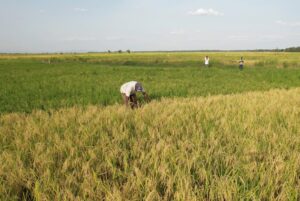
Global rice prices started moving upward in November 2009 after months of steadily declining since reaching their all-time high in May 2008. Supply problems in some major rice-producing countries, namely, India and the Philippines, have been the primary reason for this reversal of price trend. Two major typhoons hit the Philippines in late September and early October, causing damage to rice crops on the ground and also in storage to the tune of one million tons. Similarly, the worst drought in India since 1972 is estimated to have reduced the 2009 kharif (wet-season) crop by at least 15 million tons from a total of 85 million tons in the previous kharif season. The supply problem has been compounded by major floods caused by torrential rains in the southern states of Andhra Pradesh and Karnataka. Unfortunately, Andhra Pradesh, one of the major rice-growing states in India, was affected first by drought and then by flood. According to the Hindu Business Online last 17 October 2009, the state government placed the current kharif crop at 4.8 million tons compared with 8.3 million tons in 2008.
Three tenders from the Philippines amounting to 1.5 million tons and three small tenders from Indian state trading agencies amounting to 30,000 tons rattled the market in November 2009. Although India later canceled these tenders, citing higher price as the reason, the fact that India is in the market to purchase rather than to sell is likely to have a large effect on the market. In response to these fresh tenders, global rice prices increased by 15–20 percent during November 2009, with the Thai 5% rice price rising by almost 18 percent (Fig. 1).









